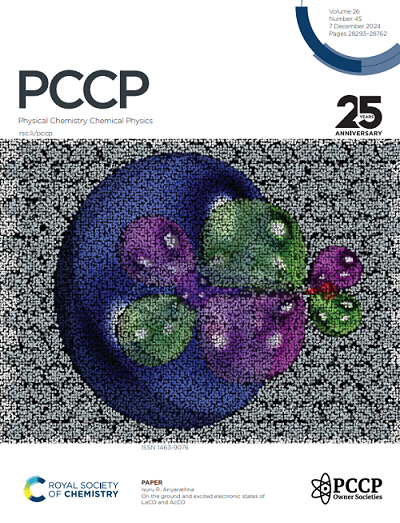IF 2.9
3区 化学
Q3 CHEMISTRY, PHYSICAL
引用次数: 0
摘要
锆合金(如 Zircaloy-4)由于能够捕获氚,从而形成金属氢化物,因此被用作产氚可燃吸收棒(TPBAR)中的氚(T)获取材料。了解锆合金在扩散到地表下之前对氚的吸附情况,对于合理设计氚获取器和 TPBAR,改善核应用的材料性能具有重要意义。在此,密度泛函理论计算揭示了锆(001)和锆(100)上氚吸附的首选结合位点。计算了 T 沿表面和从表面向次表面转移的能量障碍。研究发现,Zr(001)的吸附特性优于 Zr(100)。表面锡杂质对 T 有强烈的排斥作用。次表面和表面锡的存在导致正向和反向过程的吸收能垒较高。根据计算得出的能障,原始 Zr(001)的表面到表面 T 扩散系数预计为 9.53 x 10-10 m2s-1。根据预测,原始 Zr 的表面到次表面 T 扩散系数约为 10-13 m2s-1,在有次表面锡杂质的转移过程中,该系数将下降到 10-19 m2s-1。本文章由计算机程序翻译,如有差异,请以英文原文为准。
Tritium Adsorption and Absorption on (100) and (001) Surfaces of Pure and Tin Defective Zirconium
Zirconium alloys such as Zircaloy-4 are used as tritium (T) getter materials in tritium-producing burnable absorber rods (TPBARs) due to their ability to capture T, thereby forming metal hydrides. Developing an understanding of T adsorption onto Zircaloy prior to diffusion into the subsurface is relevant for rational tritium getter and TPBAR design, to improve material properties for nuclear applications. Herein, density functional theory calculations revealed the preferred binding sites for T adsorption on Zr(001) and Zr(100). The energy barriers of T transfer, along the surface and from the surface to the subsurface were computed. The adsorption properties of Zr(001) were found to be superior to those of Zr(100). Surface tin impurities were found to strongly repel T. The presence of subsurface and surface tin resulted in higher absorption energy barriers for both the forward and reverse processes. Based on the calculated energy barriers, a surface to surface T diffusion coefficient of 9.53 x 10-10 m2s-1 is expected for pristine Zr(001). A surface to subsurface T diffusion coefficient on the order of 10-13 m2s-1 is predicted in pristine Zr, decreasing to 10-19 m2s-1 for the transfer with a subsurface tin impurity.
求助全文
通过发布文献求助,成功后即可免费获取论文全文。
去求助
来源期刊

Physical Chemistry Chemical Physics
化学-物理:原子、分子和化学物理
CiteScore
5.50
自引率
9.10%
发文量
2675
审稿时长
2.0 months
期刊介绍:
Physical Chemistry Chemical Physics (PCCP) is an international journal co-owned by 19 physical chemistry and physics societies from around the world. This journal publishes original, cutting-edge research in physical chemistry, chemical physics and biophysical chemistry. To be suitable for publication in PCCP, articles must include significant innovation and/or insight into physical chemistry; this is the most important criterion that reviewers and Editors will judge against when evaluating submissions.
The journal has a broad scope and welcomes contributions spanning experiment, theory, computation and data science. Topical coverage includes spectroscopy, dynamics, kinetics, statistical mechanics, thermodynamics, electrochemistry, catalysis, surface science, quantum mechanics, quantum computing and machine learning. Interdisciplinary research areas such as polymers and soft matter, materials, nanoscience, energy, surfaces/interfaces, and biophysical chemistry are welcomed if they demonstrate significant innovation and/or insight into physical chemistry. Joined experimental/theoretical studies are particularly appreciated when complementary and based on up-to-date approaches.
 求助内容:
求助内容: 应助结果提醒方式:
应助结果提醒方式:


